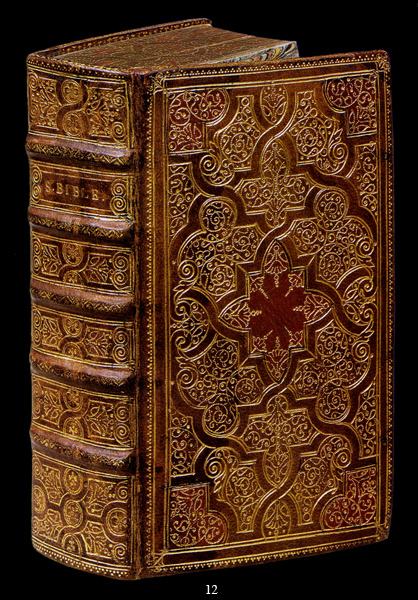

| The sumptous binding reproduced above is item number 12 in the 1993 Ader Tajan auction (Paris 4 juin) Catalogue, (click on the image to see an enlargement) I have reproduced the item description below. From this, we learn that this decorative binding covers a Bible published in 1633. The binding has been attributed to the Atelier of Macé Ruette. Further to this, two imprints have been mentioned as particular to the Ruette workshop. |
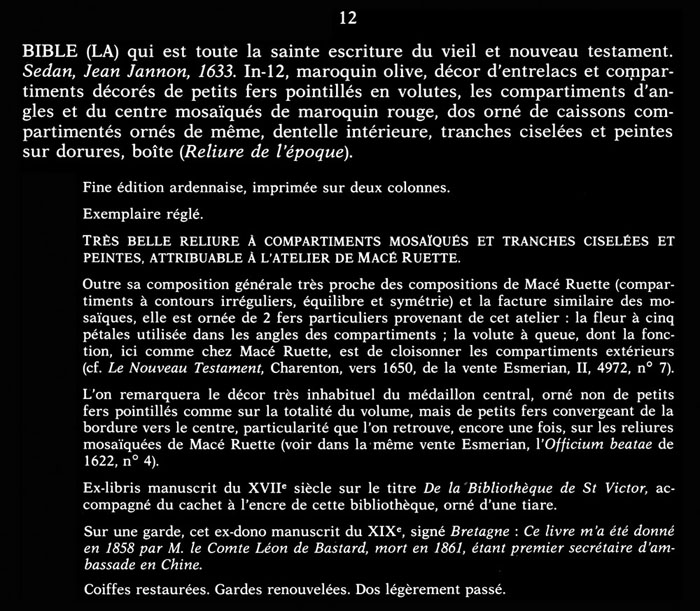
| The first imprint, in the form of a flower with five petals, (la fleur à cinq pétales), and the second is the scroll (volute) wing (la volute à queue). |
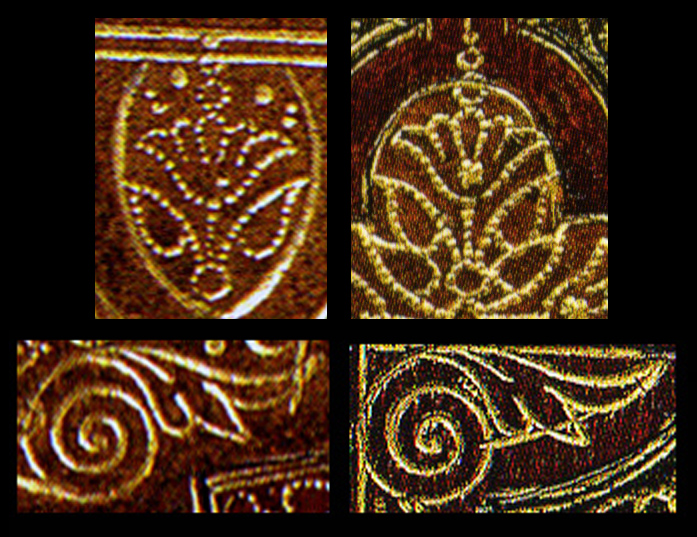

| In Comparative Diagram 2, I show item 12 and another 1633 binding attributed to Macé Ruette by the authors Isabelle de Conihout & Pascal Ract-Madoux, they do not mention this item from the Tajen catalogue. It is a great stroke of luck that I discovered these two reproductions as they appear to confirm the strong possibility that both bindings were executed about the same time, they share so many matching characteristics and tools that there can be little doubt that the both executed by Macé Ruette. |
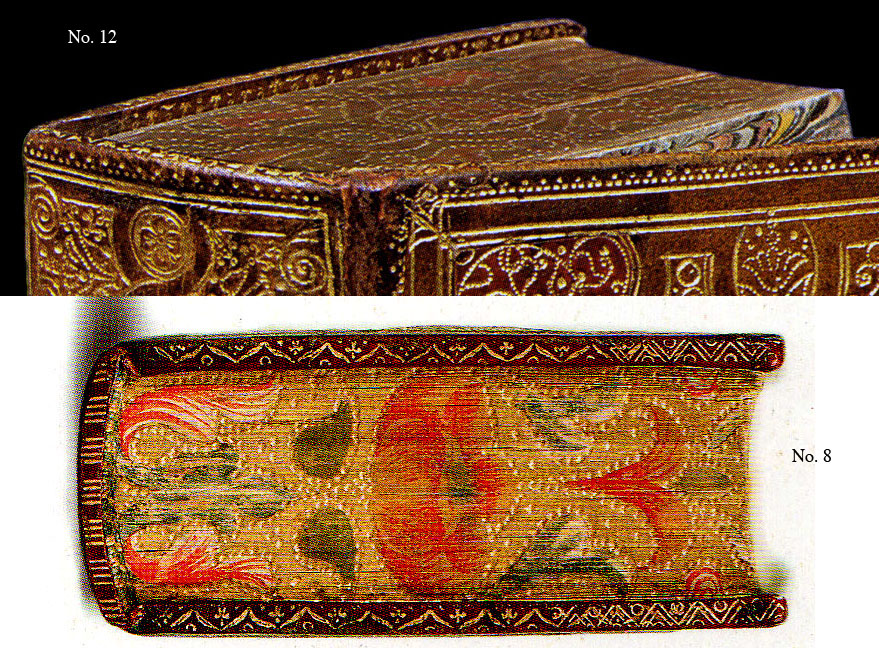
| In Comparative Diagram 3, I show that both bindings have been taken to the ultimate of luxury finishing, gilt edges decorated with elaborate pointille patterns that are further embellished with hand painted designs. I doubt whether we can fully imagine the beauty of these bindings when the were fresh out of the workshop, fabulously colored and and covered top to bottom with radiant gold. Probably most of you will think it isn't that remarkable that someone could have made such a treasure. However we often forget that when these bindings were made, they were not using power tools or superglue, there was no such thing as electricity or light bulbs, and yet they made these wonderfully decorated books that have remained in near new condition for nearly 400 years, the colors are still holding, the gold tooling is still in place, the ink has not faded and the paper has not turned to dust as modern paper would... what modern product will last 400 years, and still look like new? No, it is some kind of miracle that they made these books so well with materials built to last and stand up to a lot of wear and tear... today I see we make things that will quickly fall apart, so we are forced to by new ones, cell phones last a maximum of 6 months and we get new ones, we live in an age of "built in obsolesce", we cannot imagine owning anything that lasts for centuries. |
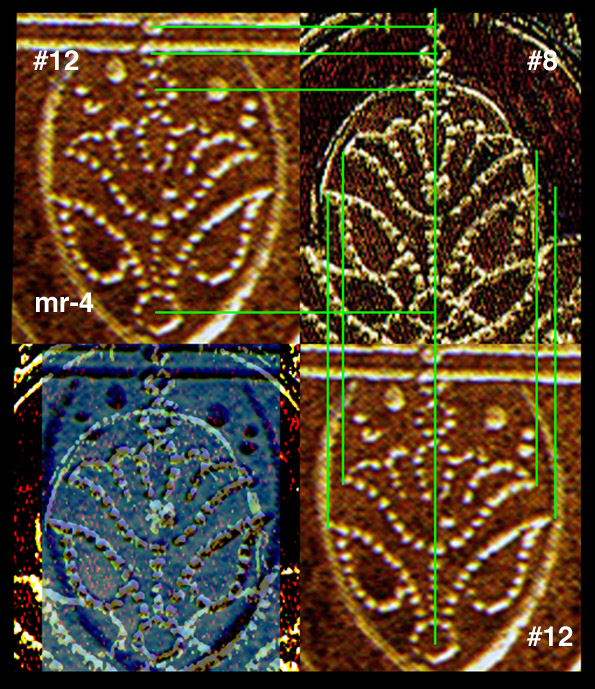
| I was amazed when i saw the quality of the imprints shown in the Ader Tajan auction catalogue photo of this binding, (shown at the top of this page), amazed too by the quality of the photo, and I resorted to all my tricks to reproduce the cover at the correct scale without distortion. After which i could extract copies of the the various imprints that appear better than any I have encountered thus far, superior even to the Conihout reproduction. After i had managed to undistort the front cover to it's correct shape and size and enlarge it to a 600 dpi scale, I devised the test shown in Comparative Diagram 4, where I have taken a 600 dpi mr-4 fleuron from the Conihout item #8 and placed it next to the resized example as well as making an overlay test. Even the slightest amount of error will show up easily in the overlay, and to my satisfaction the two imprints match up well, the resized imprint can be seen as dark blue in the overlay. Actualy you will see that the resized imprint is a bit larger and perhaps wider however this amount of error could be explained by differences in lighting and shadow, after this test i further corrected the the final image. I can therefore display now some wonderfully clear examples of the tools of Mace Ruette |
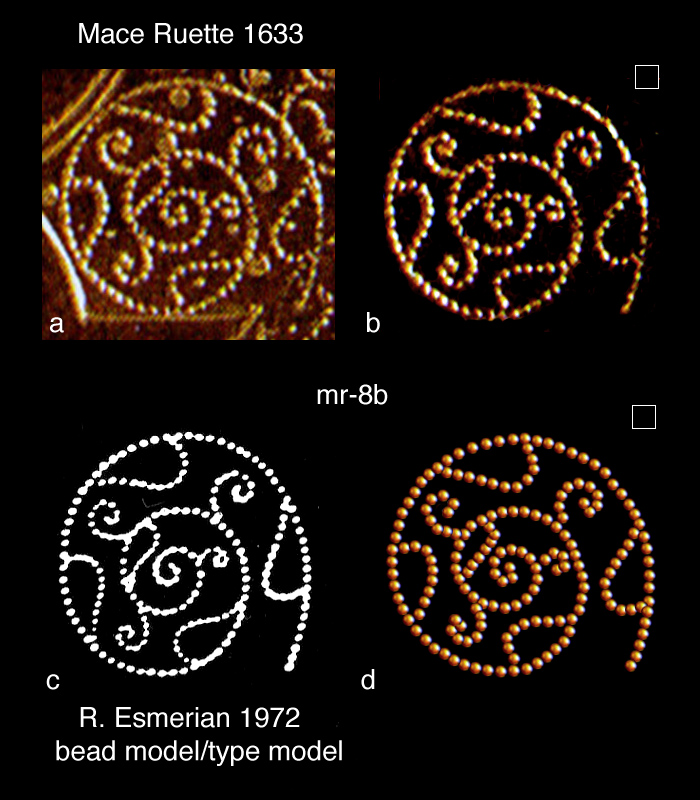
| The first tool I would like to present is a spiral which is the only spiral of this type which Esmerian has placed in his 1972 publication of Mace Ruette tool imprints. Esmerian made no attempt to catalogue the tool imprints, he simply laid them out as a collection without identifying numbers. I went further giving each of the imprints that he shows a number, this particular spiral I have numbered as mr-8b. To show the imprints, Esmerian used approximate bead models that were based closely on the imprints but not exact replicas, I have preferred to use the actual imprints where ever possible however there is a practical side of bead models and that is that they can be used to absolutely identify imprints with 99% accuracy. They are better than actual imprints which are often very messy or overlaid with other imprints. How can they absolutely identify imprints, and why do Esmerian's models fail? These spiral tools were copied by many different binders some copies are so well done that you need a large magnifying glass to spot the differences (see on this page, Comparative Diagram 2, for an example). However even the best forgery will not be able to imitate the exact number of beads in each part of the spiral, by counting the number of beads, in each detail, you will soon discover if you have found a true Mace Ruette imprint. Esmerian's models are not exact copies and so cannot be used in this way, the example I have constructed in Comparative Diagram 5 (d) is 99% accurate. It has been cross checked against a number of proven specimens. Bead models are also a good option in cases where you cannot find one good clear imprint, they can be constructed from parts of a number of imprints. |
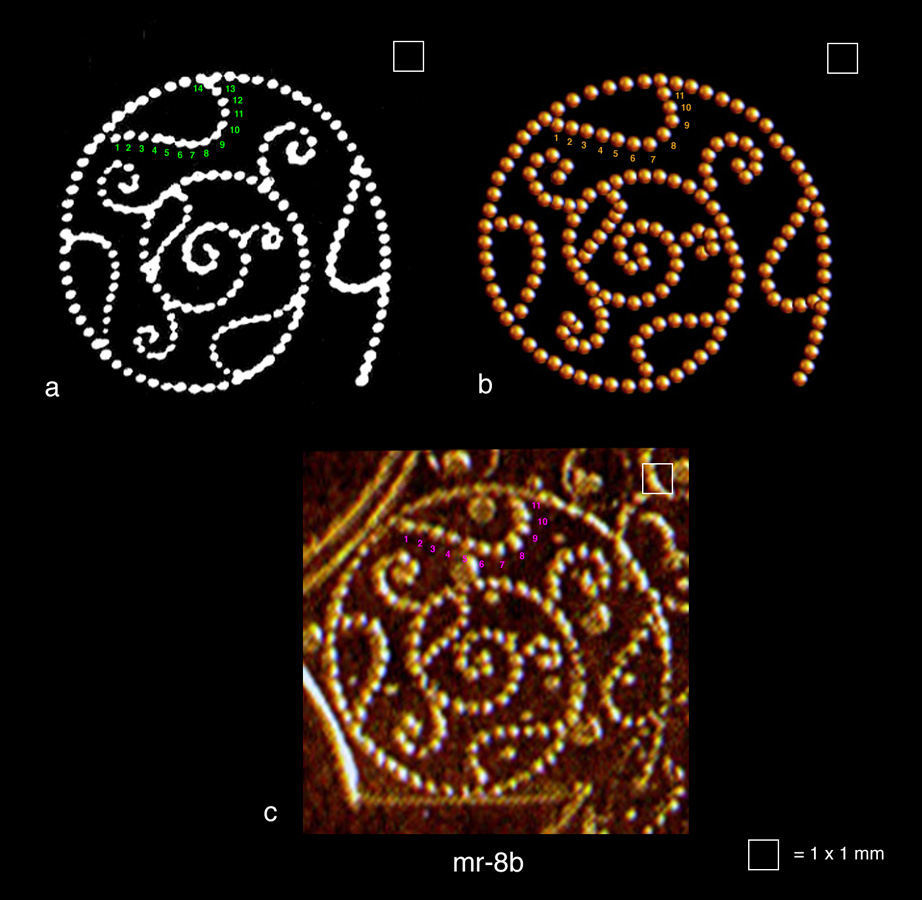
| After making Comparative Diagram 5 and writing up a description, I made Comparative Diagram 6 to clarify exactly what is being described for those who might still be a bit uncertain as to what I am raving about. Needless to say that we need an exact tool to give an exact expertise when it comes to bindings that may be valued at several thousand Euros. On the next page I will present more of these Mace Ruette 1633 imprints. |
|
See the next page L'Atelier de Macé Ruette 1633 - page 2 |
| information about the author | return to the home page of VIRTUAL BOOKBINDING |